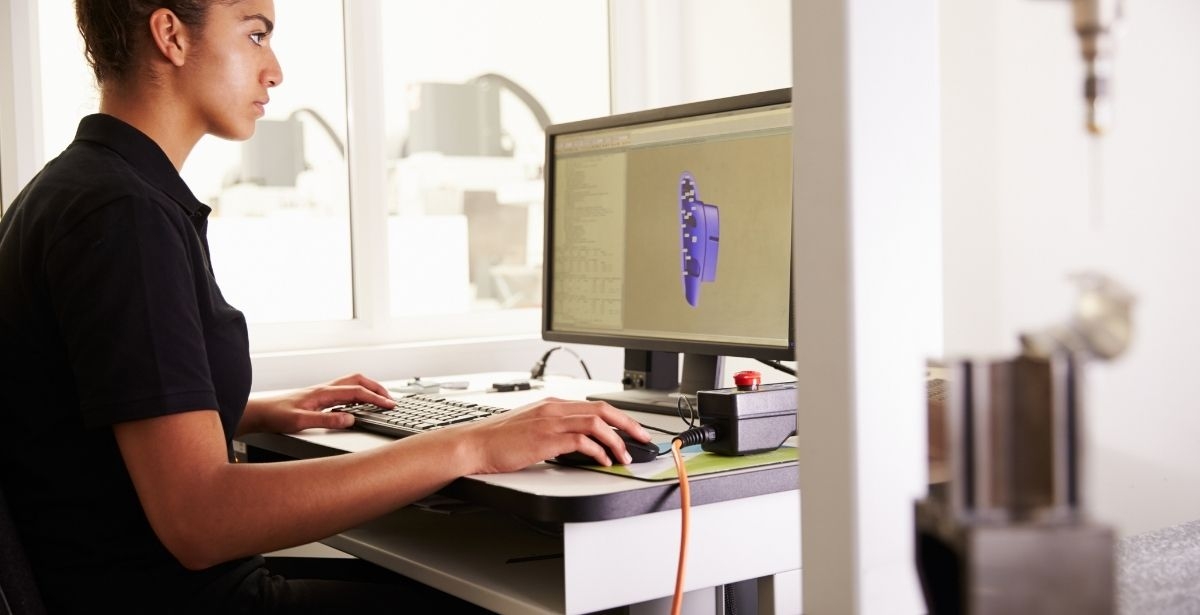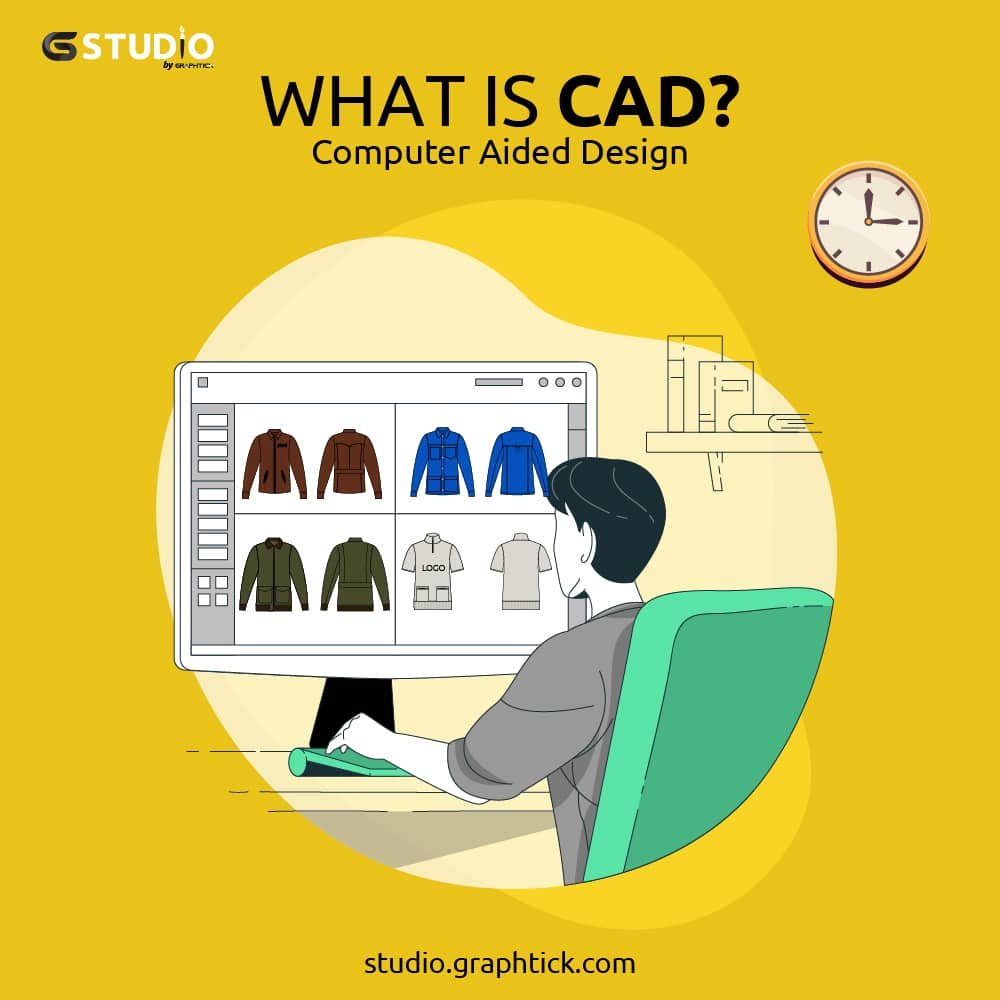Table Of Content

While CAD is used in the design process, it can’t be used to actually create physical objects and structures. For that, you need to use a computer-aided manufacturing (CAM) program along with a manufacturing machine. CAD software such as Inventor and Fusion 360 help industrial product designers both visualize objects and understand how they will function. For example, CAD is used in car design to conceptualize and render automotive designs. Documentation – CAD software documents every part of the design process, including measurements, angles and dimensions.
CAD in Architecture and Construction
CAD tools provide the ability to create lifelike renderings of designs, allowing designers to communicate their ideas effectively with stakeholders and clients. Renderings provide a visual representation of how the final product will look, helping designers to refine their designs and ensure they meet the required specifications. Aside from this software, there are also specialized CAD applications used in particular industries. For example, Ansys is a popular CAD software used by engineers for finite element analysis (FEA) and computational fluid dynamics (CFD).
11 Best Free Floor Plan Software for 2024 - G2
11 Best Free Floor Plan Software for 2024.
Posted: Tue, 16 Apr 2024 07:00:00 GMT [source]
What Are the Disadvantages of CAD Modeling?
It helps users create designs in either 2D or 3D to visualise construction, and enables the development, modification, and optimisation of the design process. This helps designers make more accurate representations and modify them more easily to improve design quality. CAD Plant 3D makes offers modern 3D design solutions for plant designers and engineers. The program helps simplify the modeling of plant components, including piping and support structures. The software offers a number of tools to deal with typical plant and process design challenges, such as the standardization and customization of parts for a particular project. It also improves accuracy as well as increases design and engineering productivity as typical challenges are addressed when building the model.
Top Rated Products
Challenges in adopting CAD technology may include the initial cost of software and hardware, training requirements, and compatibility with existing design processes and systems. CAD (Computer-Aided Design) tools have revolutionized the design industry, providing designers with a suite of powerful features to streamline their workflow and improve design accuracy. The origins of CAD can be traced back to the 1950s with the development of computer-based drafting systems. However, it wasn’t until the 1960s that true commercial applications for CAD were developed. These 3D models are therefore used in a wide variety of industries, such as for creating intricate visualizations in the automotive and manufacturing sectors. As well as expensive paid-for CAD software used by professionals, there are also free programs that are better suited to students and hobbyists.
It helps users create designs in either 2D or 3D to visualize construction, and enables the development, modification, and optimization of the design process. CAD (computer-aided design) software (such as AutoCAD®, etc.) is mostly used for accurate technical drawings and 3D modeling, which are often used in the fields of engineering, construction, and architecture. It provides cutting-edge tools for challenging tasks and needs unique to a given industry. On the other hand, SketchUp is more intuitive and adaptable, making it ideal for novices and enthusiasts. With capabilities like simple rendering and animation, it supports a variety of 3D modeling projects in addition to its focus on architectural design. Computer-aided design (CAD) modeling revolutionizes the way products are designed and engineered by employing software to create precise digital representations.
What CAD software is used by civil engineers?
Unlocking the Power of Computer-Aided Engineering (CAE) - Fusion Blog - Autodesk Redshift
Unlocking the Power of Computer-Aided Engineering (CAE) - Fusion Blog.
Posted: Wed, 20 Mar 2024 07:00:00 GMT [source]
As companies continue to adapt and invest in these tools, the full potential of CAD is yet to be unleashed. CAD has enabled automotive manufacturers to produce more efficient and safer vehicles while reducing design and production costs. Let’s take a closer look at some of the specific applications of CAD in the automotive industry. Designers and engineers use CAD solutions to create and optimize vehicle components, conduct crash simulations, and improve performance. As shown in the table, popular CAD tools such as AutoCAD, SolidWorks, and CATIA offer these essential features to designers, making them indispensable tools in the design process.
Coolest 3D Printed Robotics Projects (2024 Update)
Simplified 3D BIM tool for producing 3D architectural designs and documentation. Plan, design, construct and manage buildings with powerful tools for Building Information Modelling. CAD design software is used by manufacturers and CAM professionals to machine, fabricate, 3D print, inspect, and fabricate better quality parts, faster. Wiring diagrams show the actual connection of wires to each other and to other components in an electrical system, as well as where the components are physically located within the system. Electrical schematics provide an overview of what components are included in an electrical system, and the relationship between those components.

Software
Calculations, such as the structural load on a building component, would need to be done manually by an engineer or designer, a very time consuming - and error prone - process. Some examples include Autodesk's® BioCAD and Mimics Innovation Suite (by Materialise) for Medical 3D Printing. 3D Schematic computer-aided design, or CAD, is a method used to depict objects using lines, arcs, and curves to define an object's borders and depth. Basic geometric representations of objects are made with it, giving additional modeling a visual foundation. Wireframe CAD is more straightforward and uncomplicated than solid or surface modeling; yet, it is devoid of realistic rendering capabilities and comprehensive surface information. Bentley Systems offers the MicroStation application and product family as a 3D and 2D modeling and computer-aided design (CAD) solution for engineers and designers.
Types
CAD is widely used in computer animation and media special effects as well as in product and industrial design. CAD is used in industrial design to create sleek and functional product designs, integrate with other design tools, and streamline manufacturing processes. CAD tools offer a high level of accuracy and precision, making it easier for designers to create detailed and complex designs. CAD software allows for the creation of 2D and 3D models with precise measurements, which can be readily modified and refined.
Designers may quickly experiment with different iterations and variants of their designs by modifying them with direct modeling. This kind of CAD is very helpful for rapid prototyping and idea modeling, in which it's critical to iterate designs quickly and nimbly. The features of this software enable the creation of intricate furniture that is frequently more intricate than specialized furniture design tools.
It is accomplished by using an additive technique that involves building up layers of material, typically thermoplastic, in succession. A horizontal cross-section of the ultimate object is represented by each layer, which is finely sliced. Because they depict the depth of the objects, the prismatic models are produced by this kind of CAD.
For example, While AutoCAD is the industry leader and is used by professionals across a wide range of sectors, Blender is a high quality free CAD software that is available to anyone. CAD was developed as a more accurate, affordable way for designers, engineers and manufacturers to design, visualize and test models while minimizing the chance of mistakes. Procore is committed to advancing the construction industry by improving the lives of people working in construction, driving technology innovation, and building a global community of groundbreakers.
These CAD-neutral file formats do a great job of tearing down barriers, but not all of them are made equal. The first commercial numerical-control programming system, PRONTO, created by Dr. Patrick J. Hanratty in 1957, is credited with giving rise to computer-aided design (CAD). SKETCHPAD, developed by Ivan Sutherland in 1960 at MIT’s Lincoln Laboratory, proved the viability and fundamentals of computer-aided technical sketching. CAD is used in aerospace engineering to design complex aircraft structures, simulate aerodynamics, optimize fuel efficiency, and ensure safety and performance. CAD offers increased accuracy, faster prototyping, improved collaboration, better visualization, and the ability to make iterative changes easily, resulting in time and cost savings.
It is commonly used in industries such as automotive and aerospace engineering, in which complex curves and freeform shapes are prevalent. Surface modeling allows designers to create aesthetically pleasing and aerodynamically efficient designs, offering greater flexibility and precision in modeling organic shapes and surfaces. Computer-Aided Design (CAD) is the use of an application to help create or optimize a design. Therefore, CAD software allows engineers, architects, designers, and others to create precision drawings or technical illustrations in 2D or 3D.
AutoCAD is used in architectural drafting, civil drafting, mechanical drafting, electrical drafting, electronics, aeronautical drafting, and more. CAD has become an especially important technology within the scope of computer-aided technologies, with benefits such as lower product development costs and a greatly shortened design cycle. CAD enables designers to layout and develop work on screen, print it out and save it for future editing, saving time on their drawings. Top-end CAD systems offer the capability to incorporate more organic, aesthetic and ergonomic features into the designs.
This type of CAD is widely used in industries such as manufacturing and mechanical engineering, in which precise geometric representations are essential. Solid modeling enables designers to create detailed and accurate models, incorporating features such as fillets, chamfers, and blends to enhance realism and functionality. Solid Edge CAD is a Siemens technology that engineers, product developers and designers use to create functional, virtual prototypes of three-dimensional objects. With Solid Edge, designers can dynamically create and modify every detail of a product, part or assembly. 3D CAD software facilitates and automates other aspects of product engineering, such as simulation testing, drawing and drafting, manufacturing, data management, computer-generated animation, and more.










